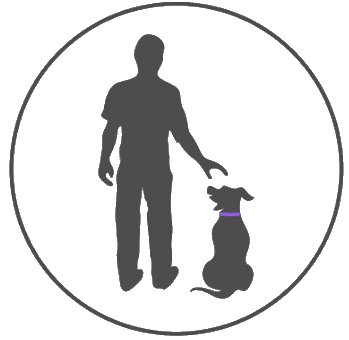Understanding Canine Cognition Basics
How Dogs Process and Retain Information Through Associative Learning
Dogs are remarkable creatures with the ability to learn and adapt through associative learning. Associative learning occurs when a dog makes a connection between two stimuli or an action and its consequence. For example, if a dog receives a treat every time they sit on command, they will associate the act of sitting with getting a treat. This is a fundamental principle used in training, where positive reinforcement strengthens these behavioral associations.
According to research, dogs can learn complex tasks through associative learning, demonstrating their capacity to process and retain information effectively. A crucial aspect of this is the clarity and consistency of signals or commands, which ensures that dogs understand what is expected of them. Repetition and reinforcement play critical roles in cementing these associations in a dog’s memory.
The Role of Working Memory and Long-Term Recall in Dog Training
Working memory allows dogs to hold information temporarily while performing tasks. This cognitive function is essential during training sessions where a dog must remember a sequence of actions or commands. Studies indicate that trained dogs exhibit superior working memory compared to their untrained counterparts, enabling them to follow instructions more quickly and accurately.
Long-term recall, on the other hand, involves the ability to remember information over an extended period. Consistent training helps dogs develop strong long-term recall abilities, making them more proficient at remembering commands and tasks even after a long time without practice. This aspect of memory is crucial for maintaining learned behaviors and skills throughout a dog’s life.
Unique Cognitive Abilities of Dogs Compared to Other Domesticated Animals
When comparing dogs to other domesticated animals, several unique cognitive abilities stand out—particularly in areas of social learning and communication. Dogs exhibit an impressive capacity to understand human cues and commands, often surpassing that of other species. This evolutionary adaptation has allowed dogs to thrive in human environments and become reliable companions and working animals.
One significant aspect of canine cognition is their ability to learn from observation. Dogs can watch other dogs or humans perform certain behaviors and then replicate them. This social learning ability allows them to pick up new commands and behaviors even without direct instruction. Moreover, dogs are adept at interpreting human body language and emotional cues, which further enhances their social interactions and strengthens the human-canine bond.
As we delve deeper into the cognitive abilities of dogs, it’s essential to recognize the profound impact of training on their mental development. Training not only aids in behavior management but also fosters a well-rounded, intelligent, and emotionally balanced canine companion. Understanding these foundational principles of canine cognition sets the stage for exploring the science of positive reinforcement and its transformative effects on training.
Understanding dog behavior is crucial for effective training and building a strong bond between you and your pet. By learning to interpret your dog’s body language, vocalizations, and emotional cues, you can anticipate their needs and reactions, leading to more successful training outcomes. This understanding allows you to tailor your training methods to suit your dog’s unique personality and cognitive abilities, ensuring that the learning process is both enjoyable and effective. Moreover, recognizing subtle changes in behavior can help prevent potential issues before they escalate, promoting a harmonious relationship.
Incorporating an understanding of dog behavior into training not only enhances communication but also fosters trust and respect. When you are attuned to your dog’s emotional state, you can adjust your approach to create a supportive and positive training environment. This adaptability is key to reinforcing desired behaviors and discouraging unwanted ones without causing stress or anxiety. As a result, your dog becomes more confident and responsive, strengthening the bond you share and making everyday interactions smoother and more rewarding.
Furthermore, understanding dog behavior is essential for addressing specific behavioral challenges. Whether dealing with anxiety, aggression, or hyperactivity, a deep comprehension of your dog’s behavior enables you to implement targeted strategies that address the root causes of these issues. By focusing on positive reinforcement and consistent communication, you can guide your dog towards healthier behavior patterns, ultimately contributing to their overall well-being and happiness. This holistic approach ensures that training is not just about obedience but about nurturing a well-adjusted and emotionally balanced companion.

The Science of Positive Reinforcement
Creating a bond of trust and understanding with your dog starts with positive reinforcement training. This method not only aids in behavior correction but also has profound effects on canine cognitive abilities. Let’s delve into how positive reinforcement influences problem-solving, creativity, and even brain chemistry in dogs.
Impact of Positive Reinforcement on Problem-Solving Abilities and Creativity
Positive reinforcement is an effective training method that significantly boosts a dog’s problem-solving skills. When dogs are rewarded for their correct responses, they feel encouraged to think creatively and explore different solutions to the challenges they encounter. This method of rewarding successful attempts fosters cognitive flexibility, leading dogs to become more confident and innovative problem solvers.
- Building Confidence: By rewarding successful task completion, dogs are more willing to try new strategies without fear of failure. This results in better engagement and a more resilient approach to tackling tasks.
- Encouraging Exploration: Dogs enjoy the training process when they receive positive reinforcement, which encourages them to explore their environment and learning opportunities freely.
Positive reinforcement helps dogs to be more analytical and independent while enhancing their adaptability to complex commands and situations.
Neurological Effects of Reward-Based Training on Dopamine Release
One of the most fascinating aspects of positive reinforcement training is its impact on the brain. Reward-based training techniques stimulate the release of dopamine, a neurotransmitter associated with pleasure and motivation. When a dog receives a treat or praise for performing a task correctly, their brain releases dopamine, reinforcing the behavior and encouraging the dog to repeat it.
- Enhanced Neural Plasticity: Training enhances neural plasticity, which is the brain’s ability to adapt by forming new neural connections. Dogs’ brains, particularly regions associated with learning and memory, show increased activity and structural changes due to consistent positive training.
- Improved Motivation and Learning: The release of dopamine makes training sessions enjoyable and fulfilling for dogs, increasing their willingness to participate and learn. This consistent engagement paves the way for better long-term retention of commands and behaviors.
Comparison Between Positive Reinforcement and Aversive Training Methods
Training methods can profoundly impact a dog’s overall well-being and behavior. Comparing positive reinforcement with aversive training methods highlights significant differences in effectiveness and the dog’s psychological health.
- Positive Reinforcement:
- Encourages Creativity: Dogs trained with positive reinforcement display higher creativity and problem-solving abilities due to encouragement and reward.
- Builds Trust: This method fosters a trusting and happy relationship between the dog and its owner, leading to better communication and mutual respect.
- Lower Stress Levels: Positive training reduces stress and anxiety, promoting better emotional regulation and overall behavioral stability.
- Aversive Training:
- Induces Fear: Methods that rely on punishment can create fear and anxiety in dogs, which may lead to aggression or other undesirable behaviors.
- Impaired Learning: Fear-based training can impair cognitive function, as stressed dogs have difficulty focusing and retaining information.
- Hinders Relationship: Aversive methods strain the bond between dog and owner, possibly leading to trust issues and less effective training outcomes.
Studies consistently show that positive reinforcement leads to more enthusiastic learners with better retention of tasks. Dogs trained using reward-based methods enjoy the learning process and develop into adaptable, intelligent companions.
To sum up, positive reinforcement training not only shapes behavior but also strengthens cognitive abilities, emotional stability, and the human-dog bond. Understanding these effects can pave the way for more informed and compassionate training approaches, ultimately creating happier and healthier pets.
The continuous process of cognitive and emotional development through positive training lays the groundwork for the subsequent neurobiological changes that follow.

Neurobiological Changes Through Training
Training dogs goes beyond teaching them tricks or commands—it alters their brain and behavior significantly. Let’s explore how various training methods can influence neural plasticity, brain function, and emotional regulation in dogs.
How Training Influences Neural Plasticity and Brain Function
When a dog undergoes training, its brain begins to change in remarkable ways. This phenomenon, known as neural plasticity, refers to the brain’s ability to reorganize itself by forming new neural connections. Training stimulates this process, making the brain more adaptable and efficient.
Studies using neuroimaging techniques, such as functional magnetic resonance imaging (fMRI), have shown that trained dogs exhibit significant changes in brain activity patterns. These changes are most notable in brain regions associated with learning, memory, and executive function. Essentially, training doesn’t just teach dogs new behaviors; it rewires their brains to become more capable and resilient.
Observable Differences in Brain Activity Between Trained and Untrained Dogs
The differences between trained and untrained dogs’ brain activities can be quite striking. Research indicates that trained dogs show increased activation in areas of the brain responsible for executive functions and decision-making. This means that when faced with a problem, trained dogs can make decisions more effectively and efficiently than their untrained counterparts.
For example, a trained dog’s brain will likely have heightened activity in its prefrontal cortex, the region associated with complex thinking and problem-solving. Meanwhile, untrained dogs may not exhibit the same level of neural sophistication. These findings suggest that training significantly enhances a dog’s cognitive abilities, allowing them to perform better in various tasks and scenarios.
Role of Training in Emotional Regulation and Stress Management
Training also plays a crucial role in managing a dog’s emotions and stress levels. Engaging dogs in structured training activates the brain’s reward system, leading to increased dopamine release. Dopamine is a neurotransmitter that helps regulate mood and motivation, making training sessions a source of positive emotional experiences for dogs.
- Reducing Anxiety and Hyperactivity: Regular cognitive training can reduce anxiety and hyperactivity in dogs. Mentally stimulating activities help channel their energy in positive ways, leading to calmer and more balanced behaviors. Dogs that are mentally engaged are less likely to develop anxiety-related issues.
- Lowering Stress Levels: Mental stimulation through training reduces stress and prevents destructive behaviors. Dogs that regularly face cognitive challenges are less likely to engage in unwanted behaviors, as their minds are preoccupied and content.
- Enhancing Emotional Regulation: Training improves a dog’s ability to regulate emotions and respond appropriately to various stimuli. This is particularly important in social situations, where well-trained dogs can manage their reactions and interactions with other dogs and humans more effectively.
Training not only enhances cognitive abilities but also equips dogs with better emotional tools to handle life’s challenges. This holistic approach leads to well-rounded, intelligent, and emotionally stable canine companions.
As we move forward to understand more complex aspects of dog training, remember the profound impacts training has on a dog’s brain and emotional health. From neural plasticity to stress management, the benefits of training extend far beyond obedience.
Advanced Training and Cognitive Development
Impact of Complex Commands on Abstract Thinking and Decision-Making
Engaging dogs in training that involves complex commands is a fascinating method of enhancing their cognitive abilities. When a dog learns to differentiate between various objects or commands, they are required to employ higher-order cognitive processes. This advanced training enables dogs to make decisions based on context and past experiences. For instance, teaching a dog to fetch a specific item from a collection necessitates an understanding of the distinct attributes of each item and an appropriate response based on those differences.
This level of training promotes not just obedience but also cognitive flexibility and problem-solving abilities. Dogs empowered with these skills are better at adapting to unpredictable situations and are more independent in their thinking. It’s a clear demonstration of their enhanced abstract thinking and decision-making capabilities.
Development of Spatial Awareness Through Specialized Training Exercises
Spatial awareness is another critical aspect of canine cognitive development. Through specialized training exercises like agility training and scent work, dogs develop their ability to navigate their environment proficiently. Agility training, for example, requires a dog to follow a course, recognizing specific obstacles and remembering their order. This continuous interaction with their environment enhances their spatial mapping abilities.
Furthermore, scent work involves a dog’s heightened sense of smell to locate objects or follow trails. This fosters not only their spatial awareness but also their problem-solving skills. By incorporating varied environments and challenges, these exercises contribute significantly to a dog’s cognitive growth, encouraging them to use and refine their spatial skills.
Enhancement of Communication Skills and Social Cognition
Training also plays a vital role in enhancing a dog’s communication skills and social cognition. When a dog learns to interpret and respond to human cues and commands, their interaction with humans and other animals improves. This heightened ability to understand body language and vocal instructions fosters better social interactions.
Moreover, studies on canine-human interactions show that dogs trained to recognize human intentions and emotions tend to have a deeper bond with their owners. This bonding is not solely based on obedience but also on an intrinsic understanding and connection fostered during training sessions.
Effective training leads to well-rounded dogs that can better manage their behavior and emotions in various situations. These enhancements in communication facilitate clearer and more effective exchanges between dogs and their human companions, deepening their mutual understanding and relationship.
Transition
With each step forward in understanding how advanced training shapes canine cognition, it’s evident that our relationship with our dogs is mutually beneficial and continually evolving. We see the profound effects of training in fostering more intelligent, adaptable, and emotionally balanced pets. As we delve deeper into the social learning aspects, we’ll discover even more about the powerful bond between humans and dogs.

Social Learning and Human-Canine Bond
Dogs’ Ability to Learn Through Observation of Peers and Humans
Dogs are remarkable at learning through observation, not just by direct training but also by watching humans and other dogs. This social learning is a fundamental aspect of their cognitive abilities. When a dog observes its owner or other dogs performing specific actions and receiving rewards, it can quickly pick up new commands and behaviors without direct instruction. This observational learning is advantageous in multi-dog households where less experienced dogs can learn from their more trained peers.
Studies on canine cognition reveal that dogs can imitate both the physical actions and the outcomes witnessed during observation. For instance, a dog that sees another dog solve a puzzle for a treat will likely attempt to replicate the successful steps to earn the same reward. This skill emphasizes dogs’ unique ability to learn incidentally, a trait they share with humans and a few other animal species.
Improvement in Understanding Human Intentions and Emotional Cues
Training plays a significant role in enhancing a dog’s ability to interpret human cues and emotions. Dogs are naturally attuned to human body language, facial expressions, and even subtle nuances in tone of voice. Through consistent training, they become more adept at understanding their owners’ intentions, which strengthens their response accuracy.
Research on canine-human interactions has shown that trained dogs can discern human emotions and react accordingly. For example, dogs can become more responsive to commands given with confidence and calmness versus those given with stress or anger. This ability to interpret and respond to human emotional cues enhances the overall effectiveness of training programs and creates a deeper mutual understanding.
Dogs not only learn commands but also learn the context in which these commands are given, furthering their ability to make decisions based on their owner’s emotional state. This aspect of training underscores the importance of a calm and consistent demeanor from the trainer, fostering an environment conducive to learning.
Strengthening the Human-Canine Bond Through Training
One of the most significant benefits of training is the strengthening of the bond between dogs and their human companions. Training sessions create shared experiences that are essential for building trust and mutual respect. Positive interactions during training boost a dog’s sense of security and attachment to its owner.
Training offers a structured way for dogs and owners to communicate effectively, reducing misunderstandings and enhancing cooperation. The more time spent together in productive activities, the stronger the relationship becomes. Owners who actively engage in training their dogs report higher levels of satisfaction and deeper emotional bonds with their pets.
The process of training also teaches owners about their dogs’ unique personalities and preferences, leading to more tailored and empathetic care. Understanding what motivates a dog, whether it be treats, affection, or play, allows trainers to foster positive reinforcement strategies that resonate well with their canine partners.
Training is not just about obedience but about creating a harmonious environment where dogs feel valued and understood. The reinforced behavior patterns and emotional connections formed during training contribute to a dog’s overall well-being, making for a happier, more balanced household.
Training’s influence extends beyond the individual dog-owner relationship. Well-trained dogs contribute to safer, more interactive communities where dogs are seen as beneficial members. These dogs often participate in public events, therapy sessions, and service roles, showcasing the profound societal value of a strong human-canine bond.
By leveraging the power of social learning, understanding human emotions, and strengthening bonds through training, we can truly appreciate and enhance the remarkable cognitive abilities of our canine companions. This shared journey not only enriches our lives but also ensures a fulfilling life for our dogs, creating a world where the human-canine relationship continues to thrive.
Long-term Benefits and Applications
Training dogs is not just about teaching them tricks or making them obedient. There are far-reaching benefits that affect their cognitive health, emotional well-being, and adaptability throughout their lives. Let’s delve into some of these important long-term benefits and applications.
Prevention of Cognitive Decline Through Consistent Mental Stimulation
Just like humans, dogs can experience cognitive decline as they age. Consistent mental stimulation through training can play a significant role in preventing this decline. Engaging dogs in various mental exercises helps keep their brains active and healthy, promoting better overall well-being.
- Regular Mental Exercises: Structured training programs that include a variety of challenges keep dogs engaged and mentally stimulated. This can involve problem-solving games, learning new commands, or interactive toys that challenge their cognitive skills.
- Impact on Dementia and Cognitive Health: Research suggests that dogs who engage in regular cognitive training have a lower risk of developing conditions like dementia. These activities help to maintain and even improve their cognitive functions as they age.
Practical Applications in Service Dogs and Rehabilitation Programs
Dogs are incredibly versatile and can be trained to assist in various fields, including service roles and rehabilitation programs.
- Enhancing Performance in Service Dogs: Service dogs, therapy dogs, and police dogs benefit immensely from advanced training. These dogs require strong problem-solving skills and the ability to adapt to different situations. Cognitive training significantly enhances their performance in these roles by boosting their ability to think critically and make quick decisions.
- Rehabilitation of Rescue Dogs: Rescue dogs often come from challenging backgrounds and may have behavioral issues. Cognitive training plays a crucial role in rehabilitating these dogs, helping them adjust to new environments, build confidence, and overcome past traumas. This training can improve their adaptability and quality of life significantly.
- Supporting Dogs with Learning Disabilities: Tailored cognitive training programs can greatly enhance the lives of dogs with learning disabilities or sensory impairments. By focusing on their specific needs and abilities, training can help these dogs develop essential skills that improve their overall functioning and quality of life.
Impact of Early-life Training on Cognitive Aging and Lifelong Adaptability
The impact of training on a dog’s cognitive development and adaptability is profound, especially when training begins early in life.
- Early-life Training and Cognitive Aging: Training dogs from a young age can have long-lasting effects on their cognitive health. Studies indicate that dogs who receive consistent training throughout their lives tend to maintain better cognitive function as they grow older. This early-life training can act as a buffer against cognitive decline, keeping their minds sharp well into their senior years.
- Lifelong Problem-solving Skills: Consistent training throughout a dog’s life fosters robust problem-solving skills and adaptability. Dogs that are regularly challenged mentally are better equipped to handle new and unexpected situations. This resilience and flexibility are crucial for their overall well-being and can make them more adaptable companions.
Training is not just about teaching commands; it is about enhancing a dog’s emotional and cognitive health. Consistent, positive training can lead to smarter, more adaptable, and emotionally balanced pets. This deeper understanding of how training impacts dogs highlights the importance of maintaining a consistent training regimen, contributing to the well-being and happiness of your canine companion.



